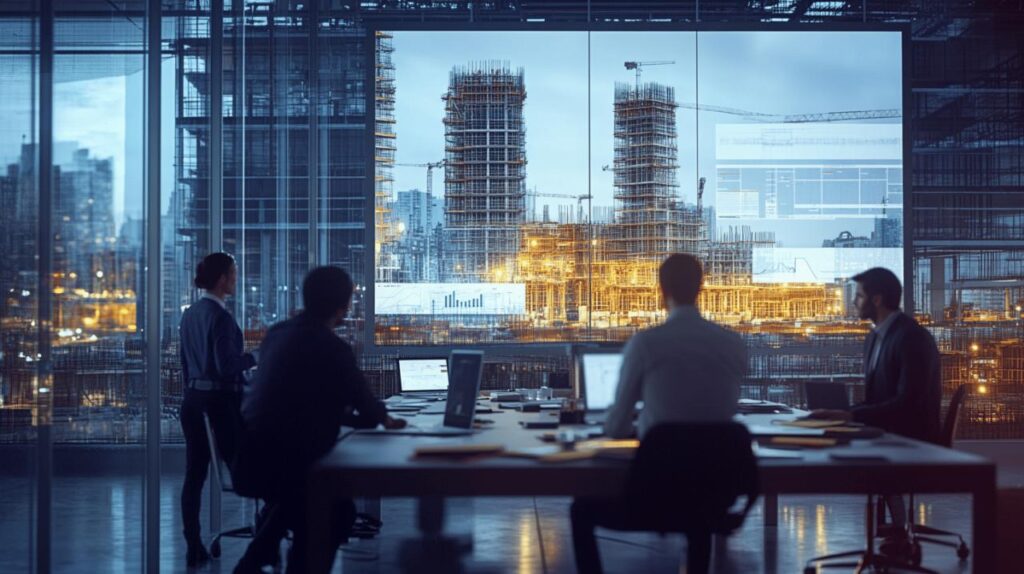Construction site panels serve as crucial communication tools, providing essential information to workers, visitors, and the public. When designed effectively, these panels can significantly enhance safety, improve site security, and boost a company’s professional image. This comprehensive guide explores the key elements of creating impactful construction site panels that communicate clearly while meeting regulatory requirements.
Creating clear and understandable designs
The effectiveness of construction site panels begins with clarity. Criterio Selecta, known for their tailored consulting services, emphasises that simplicity in design leads to better comprehension and compliance. When designing construction hoardings or safety boards, eliminating visual clutter is essential – each element should serve a specific purpose without overwhelming viewers.
Simplifying complex information for quick comprehension
Construction sites involve complex operations, but your signage shouldn’t reflect this complexity. Break down information into digestible sections with clear headings. Consider your audience’s perspective – workers may understand certain terminology, but visitors and passers-by need more straightforward explanations. Use plain language explanations alongside any technical information to ensure universal understanding.
Using visual hierarchy to guide attention
Effective site panels use visual hierarchy to direct the viewer’s attention to the most critical information first. Size, colour, and placement all contribute to this hierarchy. The most crucial safety warnings should be prominently displayed at eye level, while supporting details can be positioned lower or in smaller text. This strategic arrangement ensures that even people glancing at the panel will absorb the most important messages.
Language choices for maximum clarity
The language used on construction site panels significantly impacts their effectiveness. Technical jargon can create barriers to understanding, potentially compromising safety and compliance. Using everyday language ensures that everyone, regardless of their technical knowledge, can understand the messages being conveyed.
Replacing technical jargon with everyday terms
Construction terminology that seems obvious to industry professionals may be confusing to others. When creating site panels, translate technical terms into common language. For example, instead of referring to ‘PPE compliance zones,’ simply state ‘Wear safety equipment in this area.’ This approach makes instructions accessible to everyone who might enter or pass by the construction site.
Writing concise and direct instructions
Long, complex sentences have no place on construction site panels. Instructions should be concise and action-oriented. Each directive should clearly state what action is required, using active voice and simple sentence structures. Remember that people often read these panels while moving, so messages must be quickly understood and easily remembered.
Highlighting safety information effectively
Safety information is arguably the most crucial content on construction site panels. The design should prioritise these messages, making them impossible to overlook. This involves strategic placement and visual reinforcement through consistent symbols and icons.
Strategic placement of critical safety messages
Safety information should be positioned where it will receive maximum visibility. Place the most critical warnings at entry points and at eye level. Consider the flow of movement around the site to determine optimal placement for different types of safety messages. For temporary hazards, portable signage can be positioned exactly where the risk exists, supplementing permanent panels.
Using Symbols and Icons to Reinforce Safety Requirements
Internationally recognised safety symbols provide immediate visual cues that transcend language barriers. Following the ISO 7010 standards ensures consistency in symbol usage. These visual elements should complement written instructions rather than replace them entirely. The combination of text and symbols creates redundancy that improves comprehension and retention of safety information.
Optimising visibility through design elements
Even the best-written content is ineffective if people cannot see or read it. Visibility considerations include colour selection, typography, and physical placement of panels around the construction site.
Colour Selection for Maximum Impact and Recognition
Colours on construction site panels serve both aesthetic and functional purposes. High-contrast colour combinations improve readability from a distance, while standard safety colours (red for prohibition, yellow for caution, blue for mandatory actions, and green for emergency information) provide instant recognition of message types. Weather resistance should also factor into colour selection, as some pigments fade more quickly than others when exposed to sunlight.
Typography considerations for distance readability
Font selection significantly impacts the readability of construction site panels. Sans-serif fonts generally offer better legibility at a distance. Text size should be proportional to the expected viewing distance – a good rule is that letters should be at least 25mm high for every 7.5 metres of viewing distance. Avoid decorative or condensed typefaces that may look attractive but compromise readability.
Incorporating essential contact information
Contact information transforms a passive panel into an interactive resource. This section of the panel connects viewers with the people responsible for the site and provides channels for reporting issues or obtaining further information.
Organising emergency and non-emergency contacts
Clear distinctions between emergency and non-emergency contacts prevent confusion in critical situations. Emergency contacts should be highlighted with appropriate visual cues and positioned prominently. Non-emergency contacts can include the site manager, company office, and community liaison representatives. Each listing should specify when and why that particular contact should be used.
Making qr codes and digital access points intuitive
Modern construction site panels increasingly incorporate digital elements like QR codes linking to more detailed information. These digital access points should be clearly labelled with instructions and benefits for scanning. Consider using weatherproof QR code materials that remain scannable despite exposure to the elements. The landing pages for these digital extensions should be mobile-optimised and provide immediately useful information.
Designing for environmental durability
Construction site panels face challenging environmental conditions. Designing for durability ensures that panels remain effective throughout the project timeline while minimising maintenance and replacement costs.
Material selection for various weather conditions
Different materials offer varying levels of weather resistance. Aluminium composite panels provide excellent durability for long-term installations, while correx plastic offers a cost-effective solution for shorter projects. For fence covers and hoardings, reinforced PVC materials withstand wind and rain while maintaining visual appeal. The mounting system is equally important – secure fixings prevent panels from becoming hazards during high winds.
Maintenance planning for long-term effectiveness
Even the most durable materials require maintenance to remain effective. Establish regular inspection schedules to check for damage, fading, or outdated information. Modular designs allow for partial updates rather than complete replacements when information changes. Consider how cleaning methods might affect printed surfaces and choose materials compatible with available maintenance resources.
Meeting regulatory requirements
Construction site panels must comply with various regulations regarding content, placement, and design. Understanding these requirements is essential for legal compliance and site safety.
Navigating legal standards for construction signage
Regulatory requirements for construction signage vary by location and project type. Common standards include the Health and Safety (Safety Signs and Signals) Regulations 1996, which specify the design and use of safety signs. Site-specific requirements might include planning conditions related to hoarding appearance or local council regulations about advertising content on site panels. Research applicable regulations early in the design process to avoid costly revisions.
Documentation and compliance verification processes
Maintaining records of signage implementation demonstrates compliance with regulations. Document the placement, content, and installation dates of all site panels. Photographs provide visual evidence of compliance and serve as references for maintenance or replacement. Include signage in regular site safety audits to verify continued compliance as site conditions evolve throughout the project timeline.


